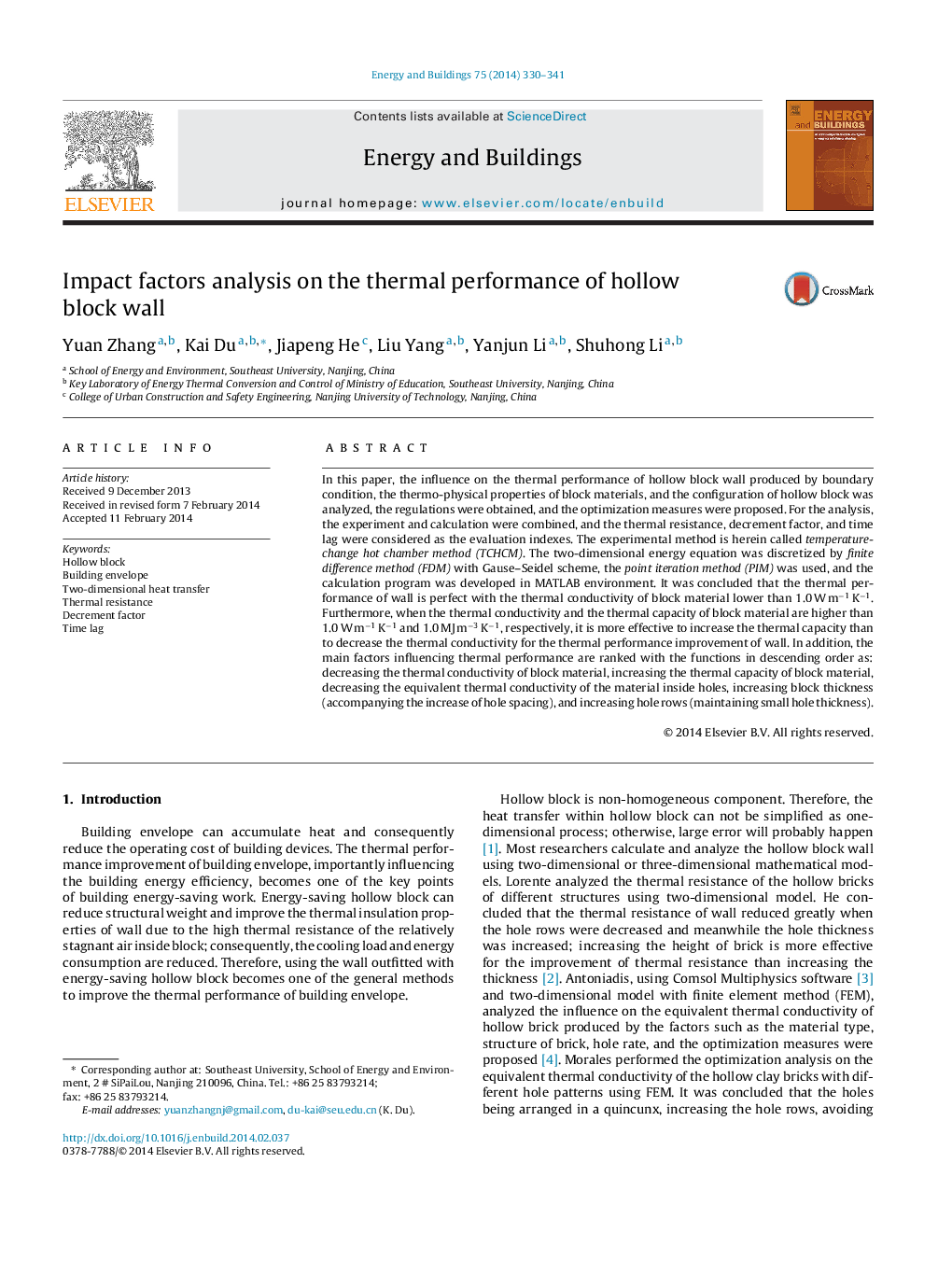| کد مقاله | کد نشریه | سال انتشار | مقاله انگلیسی | نسخه تمام متن |
|---|---|---|---|---|
| 6733994 | 504061 | 2014 | 12 صفحه PDF | دانلود رایگان |
عنوان انگلیسی مقاله ISI
Impact factors analysis on the thermal performance of hollow block wall
ترجمه فارسی عنوان
تجزیه و تحلیل عوامل تاثیر بر عملکرد حرارتی دیوار بلوک توخالی
دانلود مقاله + سفارش ترجمه
دانلود مقاله ISI انگلیسی
رایگان برای ایرانیان
کلمات کلیدی
بلوک توخالی، پاکت ساختمان، انتقال حرارت دو بعدی، مقاومت حرارتی، فاکتور افتادگی، اختلاف زمانی،
موضوعات مرتبط
مهندسی و علوم پایه
مهندسی انرژی
انرژی های تجدید پذیر، توسعه پایدار و محیط زیست
چکیده انگلیسی
In this paper, the influence on the thermal performance of hollow block wall produced by boundary condition, the thermo-physical properties of block materials, and the configuration of hollow block was analyzed, the regulations were obtained, and the optimization measures were proposed. For the analysis, the experiment and calculation were combined, and the thermal resistance, decrement factor, and time lag were considered as the evaluation indexes. The experimental method is herein called temperature-change hot chamber method (TCHCM). The two-dimensional energy equation was discretized by finite difference method (FDM) with Gause-Seidel scheme, the point iteration method (PIM) was used, and the calculation program was developed in MATLAB environment. It was concluded that the thermal performance of wall is perfect with the thermal conductivity of block material lower than 1.0Â WÂ mâ1Â Kâ1. Furthermore, when the thermal conductivity and the thermal capacity of block material are higher than 1.0Â WÂ mâ1Â Kâ1 and 1.0Â MJÂ mâ3Â Kâ1, respectively, it is more effective to increase the thermal capacity than to decrease the thermal conductivity for the thermal performance improvement of wall. In addition, the main factors influencing thermal performance are ranked with the functions in descending order as: decreasing the thermal conductivity of block material, increasing the thermal capacity of block material, decreasing the equivalent thermal conductivity of the material inside holes, increasing block thickness (accompanying the increase of hole spacing), and increasing hole rows (maintaining small hole thickness).
ناشر
Database: Elsevier - ScienceDirect (ساینس دایرکت)
Journal: Energy and Buildings - Volume 75, June 2014, Pages 330-341
Journal: Energy and Buildings - Volume 75, June 2014, Pages 330-341
نویسندگان
Yuan Zhang, Kai Du, Jiapeng He, Liu Yang, Yanjun Li, Shuhong Li,
